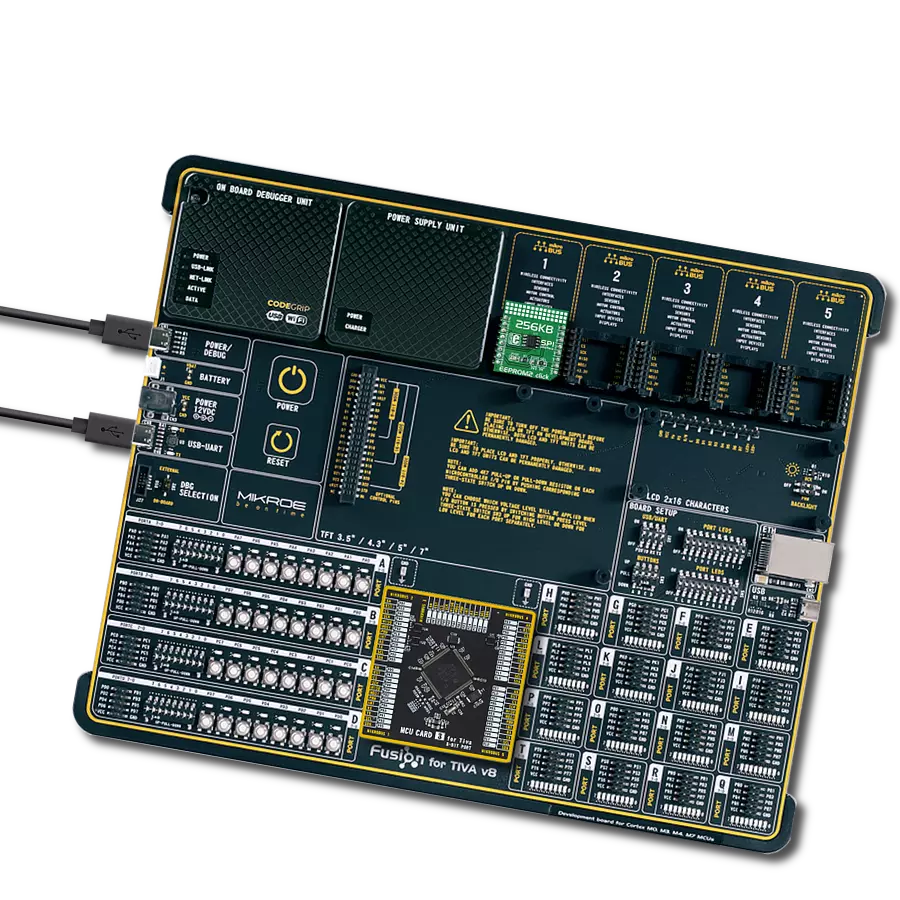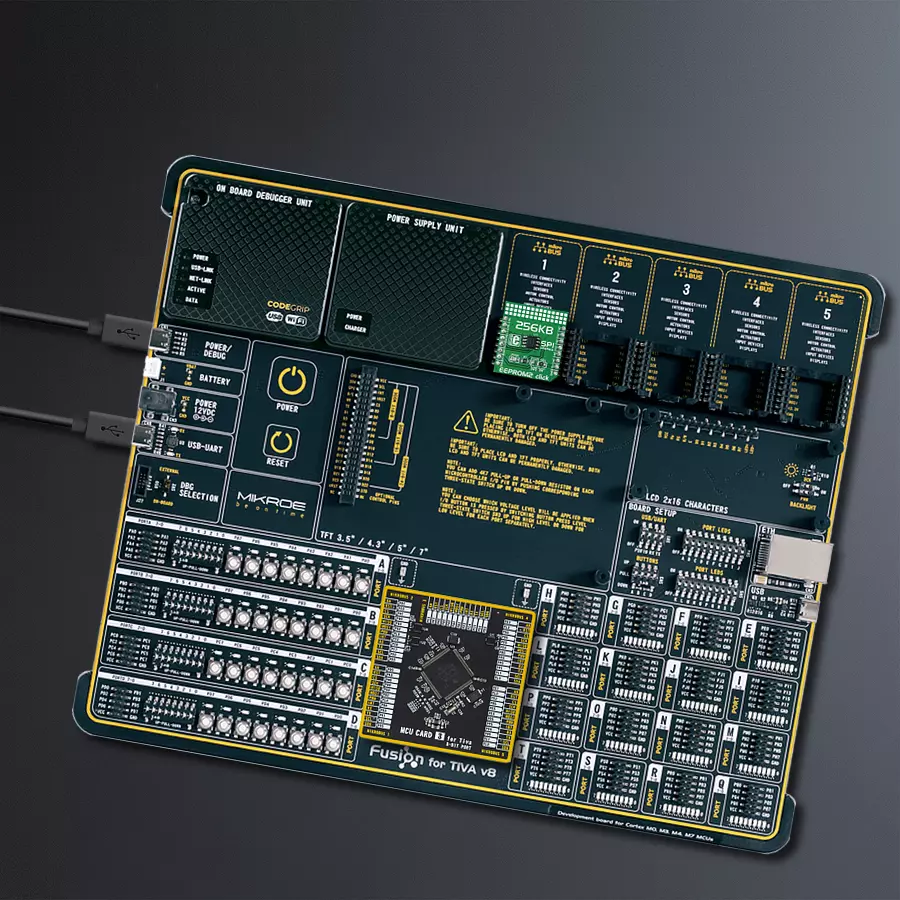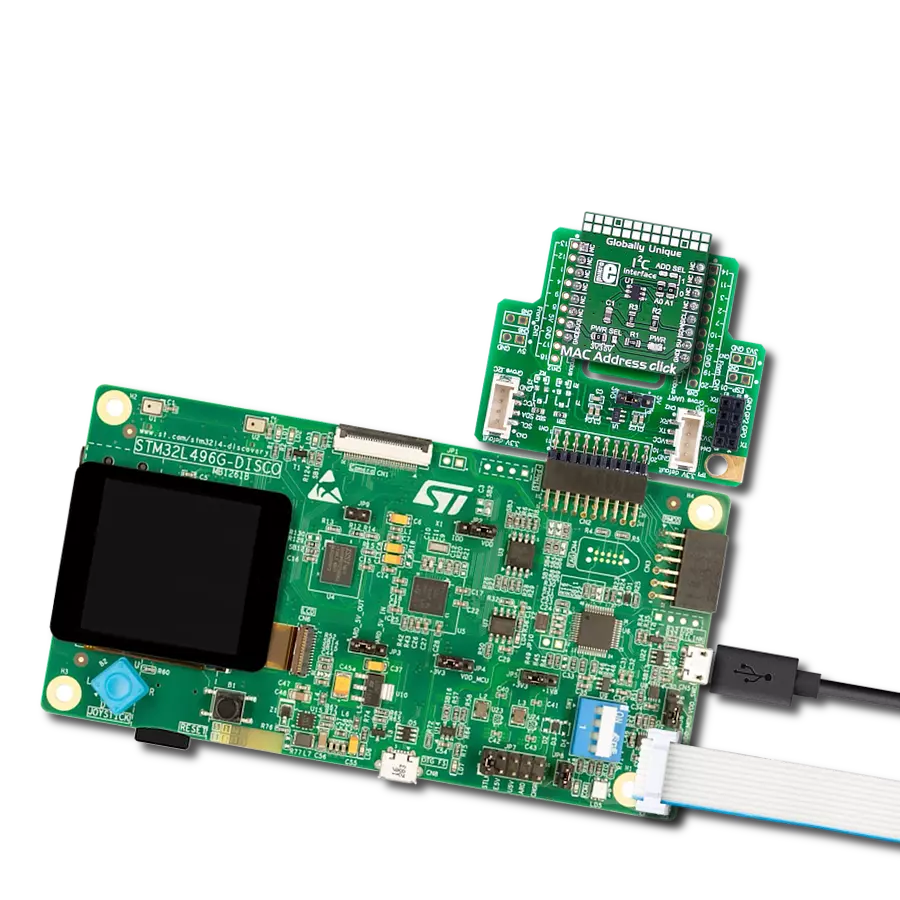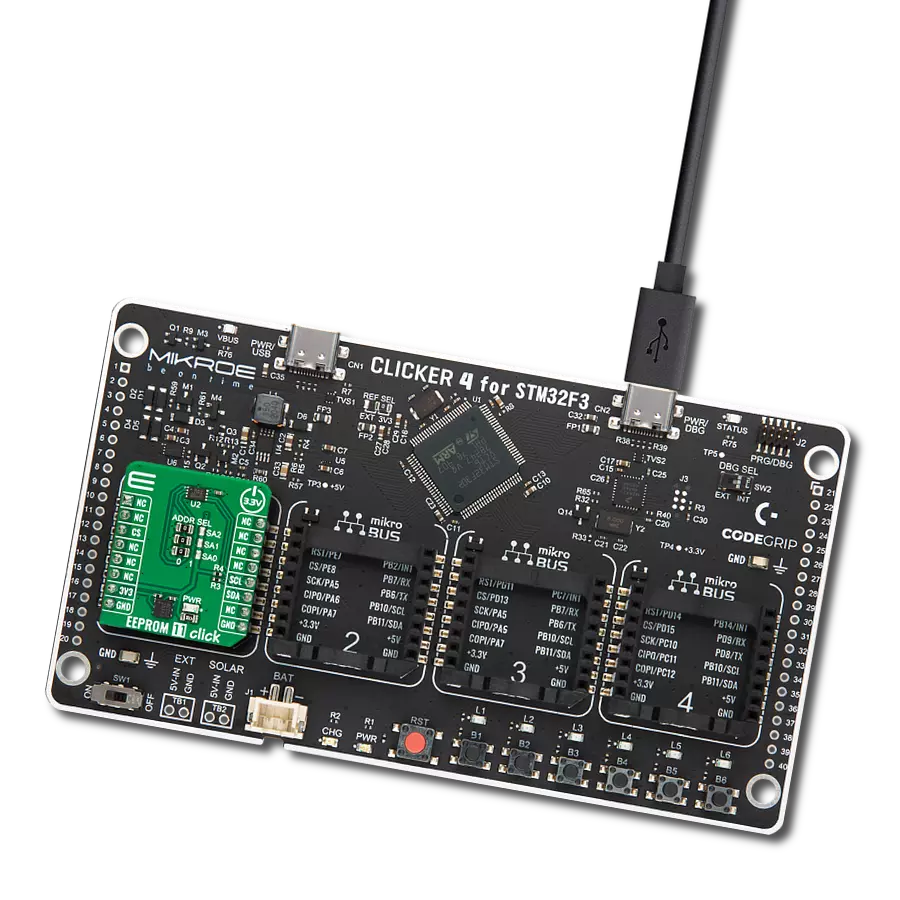By incorporating EEPROM memory, our solution enables seamless configuration updates and calibration adjustments, enhancing the flexibility and adaptability of your systems
A
A
Hardware Overview
How does it work?
EEPROM 2 Click is based on the M95M02, a 2-Mbit serial SPI bus EEPROM from STMicroelectronics. EEPROM density of 2Mbit is expressed in bits, so exactly 2,097,152 bits are organized in units or words of 8 bits, which gives 262,144 bytes of data memory. Furthermore, the EEPROM is organized in memory pages. One page holds 256 bytes, and there are 1024 pages (1024 pages x 256 bytes = 262,144 bytes total). Having insight into how the memory cells are organized is important for Write and Erase operations. One of the key features of
the M95M02 IC is the Error Correction Code logic (ECC), which allows error correction and is done internally. Another feature of the M95M02 IC is an identification memory page, 256 bytes long, which can be used to store an ID or other sensitive data, and once written, it can be permanently locked. EEPROM 2 Click uses a standard 4-Wire SPI interface to communicate with the host MCU, supporting clock frequency of up to 5MHz. There are several instruction codes, such as Write Enable and Disable, Write and Read from memory array,
Read and Write to Status register, and so on. It also includes a write protection of the specific part or the whole memory array. This Click board™ can operate with either 3.3V or 5V logic voltage levels selected via the PWR SEL jumper. This way, both 3.3V and 5V capable MCUs can use the communication lines properly. Also, this Click board™ comes equipped with a library containing easy-to-use functions and an example code that can be used as a reference for further development.
Features overview
Development board
Fusion for TIVA v8 is a development board specially designed for the needs of rapid development of embedded applications. It supports a wide range of microcontrollers, such as different 32-bit ARM® Cortex®-M based MCUs from Texas Instruments, regardless of their number of pins, and a broad set of unique functions, such as the first-ever embedded debugger/programmer over a WiFi network. The development board is well organized and designed so that the end-user has all the necessary elements, such as switches, buttons, indicators, connectors, and others, in one place. Thanks to innovative manufacturing technology, Fusion for TIVA v8 provides a fluid and immersive working experience, allowing access
anywhere and under any circumstances at any time. Each part of the Fusion for TIVA v8 development board contains the components necessary for the most efficient operation of the same board. An advanced integrated CODEGRIP programmer/debugger module offers many valuable programming/debugging options, including support for JTAG, SWD, and SWO Trace (Single Wire Output)), and seamless integration with the Mikroe software environment. Besides, it also includes a clean and regulated power supply module for the development board. It can use a wide range of external power sources, including a battery, an external 12V power supply, and a power source via the USB Type-C (USB-C) connector.
Communication options such as USB-UART, USB HOST/DEVICE, CAN (on the MCU card, if supported), and Ethernet is also included. In addition, it also has the well-established mikroBUS™ standard, a standardized socket for the MCU card (SiBRAIN standard), and two display options for the TFT board line of products and character-based LCD. Fusion for TIVA v8 is an integral part of the Mikroe ecosystem for rapid development. Natively supported by Mikroe software tools, it covers many aspects of prototyping and development thanks to a considerable number of different Click boards™ (over a thousand boards), the number of which is growing every day.
Microcontroller Overview
MCU Card / MCU
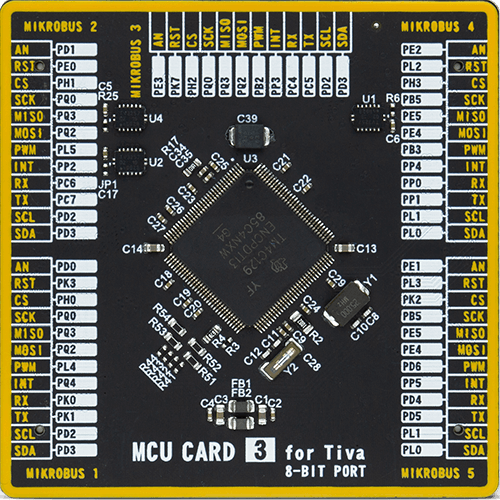
Type
8th Generation
Architecture
ARM Cortex-M4
MCU Memory (KB)
1024
Silicon Vendor
Texas Instruments
Pin count
128
RAM (Bytes)
262144
Used MCU Pins
mikroBUS™ mapper
Take a closer look
Click board™ Schematic

Step by step
Project assembly
Track your results in real time
Application Output
1. Application Output - In Debug mode, the 'Application Output' window enables real-time data monitoring, offering direct insight into execution results. Ensure proper data display by configuring the environment correctly using the provided tutorial.

2. UART Terminal - Use the UART Terminal to monitor data transmission via a USB to UART converter, allowing direct communication between the Click board™ and your development system. Configure the baud rate and other serial settings according to your project's requirements to ensure proper functionality. For step-by-step setup instructions, refer to the provided tutorial.

3. Plot Output - The Plot feature offers a powerful way to visualize real-time sensor data, enabling trend analysis, debugging, and comparison of multiple data points. To set it up correctly, follow the provided tutorial, which includes a step-by-step example of using the Plot feature to display Click board™ readings. To use the Plot feature in your code, use the function: plot(*insert_graph_name*, variable_name);. This is a general format, and it is up to the user to replace 'insert_graph_name' with the actual graph name and 'variable_name' with the parameter to be displayed.

Software Support
Library Description
This library contains API for EEPROM 2 Click driver.
Key functions:
eeprom2_write- This function writes a single byte of data to the given memory addresseeprom2_write_bytes- This function writes bytes of data to the given memory addresseeprom2_read_bytes- This function reads bytes from the given memory address.
Open Source
Code example
The complete application code and a ready-to-use project are available through the NECTO Studio Package Manager for direct installation in the NECTO Studio. The application code can also be found on the MIKROE GitHub account.
/*!
* \file
* \brief Eeprom2 Click example
*
* # Description
* This application demonstrates the process of writing and
* reading of data from EEPROM.
*
* The demo application is composed of two sections :
*
* ## Application Init
* Initializes EEPROM 2 driver.
*
* ## Application Task
* Writing data to EEPROM and then reading that data and writing it via UART.
*
* \author MikroE Team
*
*/
// ------------------------------------------------------------------- INCLUDES
#include "board.h"
#include "log.h"
#include "eeprom2.h"
// ------------------------------------------------------------------ VARIABLES
static eeprom2_t eeprom2;
static log_t logger;
uint8_t text[ 7 ] = { 'M','i','k','r','o','e' };
uint8_t mem_value[ 7 ] = { 0 };
// ------------------------------------------------------ APPLICATION FUNCTIONS
void application_init ( void )
{
log_cfg_t log_cfg;
eeprom2_cfg_t cfg;
/**
* Logger initialization.
* Default baud rate: 115200
* Default log level: LOG_LEVEL_DEBUG
* @note If USB_UART_RX and USB_UART_TX
* are defined as HAL_PIN_NC, you will
* need to define them manually for log to work.
* See @b LOG_MAP_USB_UART macro definition for detailed explanation.
*/
LOG_MAP_USB_UART( log_cfg );
log_init( &logger, &log_cfg );
log_info( &logger, "---- Application Init ----" );
// Click initialization.
eeprom2_cfg_setup( &cfg );
EEPROM2_MAP_MIKROBUS( cfg, MIKROBUS_1 );
eeprom2_init( &eeprom2, &cfg );
}
void application_task ( void )
{
eeprom2_write_bytes ( &eeprom2, 0x01, text, 6 );
log_printf ( &logger, "Writing Mikroe to EEPROM 2 Click\r\n" );
Delay_ms ( 1000 );
eeprom2_read_bytes ( &eeprom2, 0x01 , mem_value, 6 );
log_printf ( &logger, "Data read: %s\r\n", mem_value );
Delay_ms ( 1000 );
}
int main ( void )
{
/* Do not remove this line or clock might not be set correctly. */
#ifdef PREINIT_SUPPORTED
preinit();
#endif
application_init( );
for ( ; ; )
{
application_task( );
}
return 0;
}
// ------------------------------------------------------------------------ END
